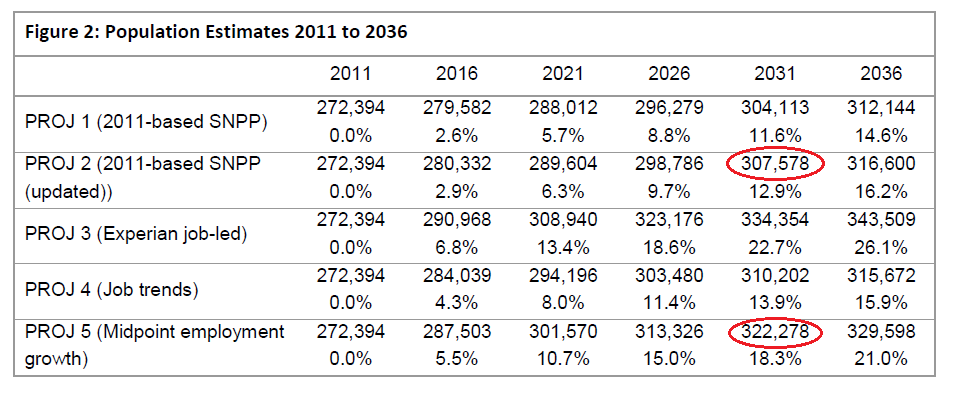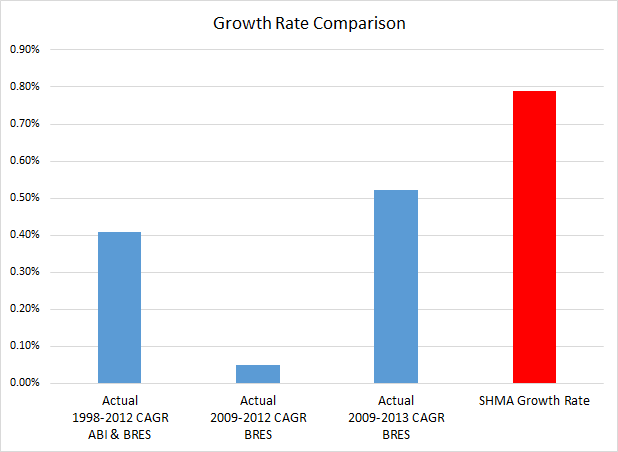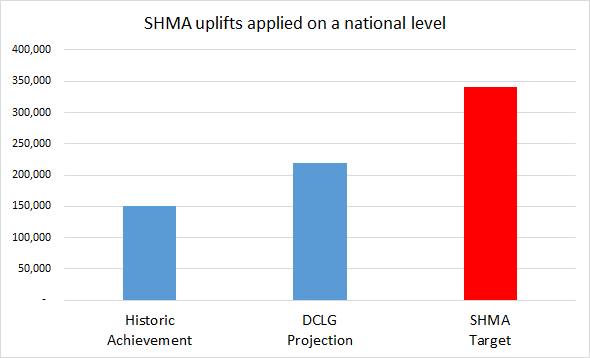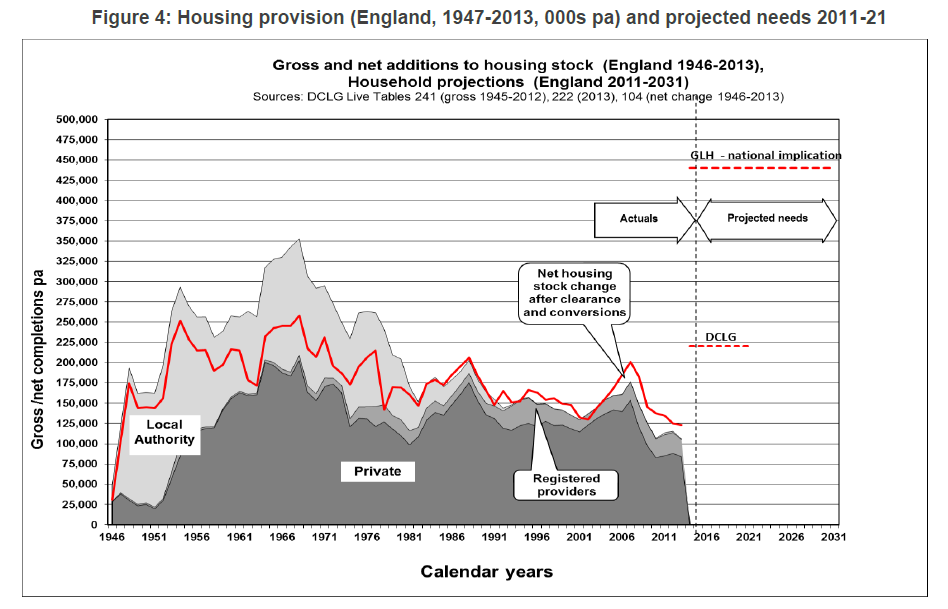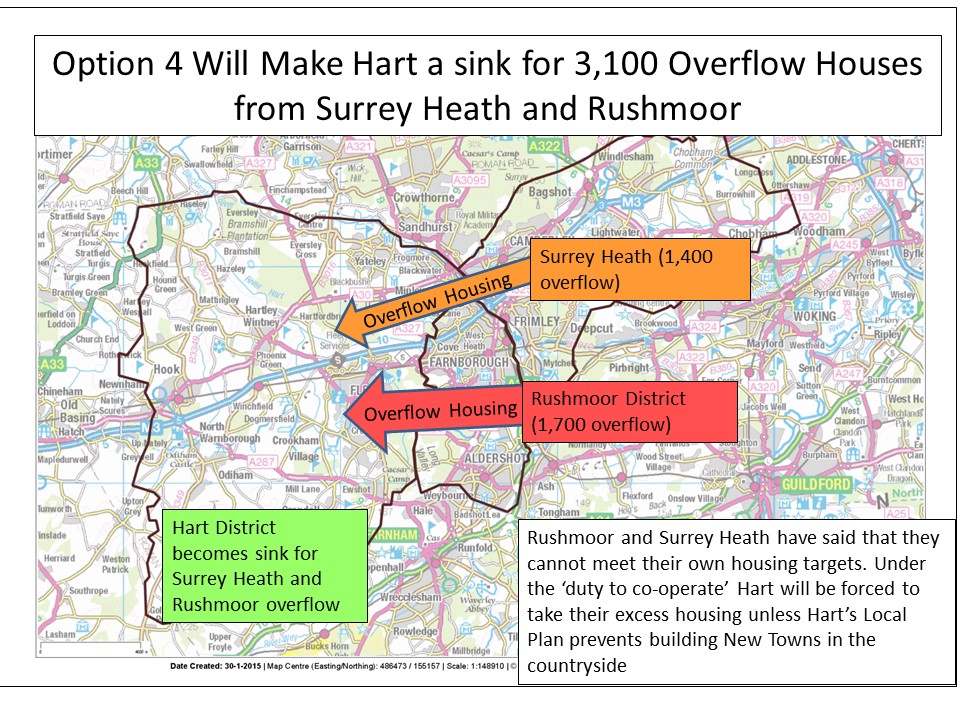An independent expert, Alan Wenban-Smith has taken a look at our housing needs assessment and concluded that Hart District is being asked to build too many houses. He says that the overall house-building rate for the combined area of Hart, Surrey Heath and Rushmoor should more than halve from 1,180 dwellings per annum (dpa) to 558 dpa, and that for Hart should fall from 370 to 268dpa. This would reduce the overall housing need for the housing market area from 23,600 to 11,160 and that for Hart from 7,500 to around 5,500. This calls into question the validity of carrying out a new “Housing Options” consultation now when there is serious doubt about the accuracy of the housing numbers we need to deliver. Please do get involved with this consultation and respond to it using our guide on our dedicated page about this consultation here.
This is very good news in that if this analysis is upheld at inspection it should lead to the following conclusions:
- We can meet all of our remaining housing need from brownfield sites alone.
- We definitely would not need a new town in Winchfield or anywhere in Hart, nor would we need any urban extensions.
- The risk of needing to build 3,000 houses to cater for the unmet needs of Surrey Heath and Rushmoor should fall away.
- There may be an opportunity to ask Surrey Heath and Rushmoor to build more houses for Hart, so we could keep our beautiful countryside.
Mr Wenban-Smith’s full report was commissioned by We Heart Hart and Winchfield Action Group can be downloaded here:

Critique of the Hart, Rushmoor and Surrey Heath SHMA by Alan Wenban-Smith
The summary of his argument, together with the implications is discussed below:
The starting point for assessing housing need in Hart used the 2011-based population projections from the Government and then made a series of changes to extend those projections out to 2031; adjust for higher inward migration estimates and for smaller average household size. These 2011-based projections have been superseded by more recent 2012-based figures that already make projections to 2031 and already include the adjustments made above. The effect of this is to reduce the start-point considerably.
Hart has already commissioned a review of the Strategic Housing Market Assessment (SHMA) to take account of these latest Government figures and so should include this reduction. We should know the results of this work early in 2016. However, this does call into question the validity of conducting a new consultation now when the numbers are subject to such a large degree of change.
Then Mr Wenban-Smith challenges the jobs forecasts in the SHMA, concluding that the level of jobs growth we achieved in the period 1998-2008 would be a “good result” and the increases in jobs and houses needed to support economic growth should be reduced.
Finally, he then goes on to say that the level of house need shown in the SHMA cannot be delivered by the market. If the amount of land required to meet the need is allocated by the council, then this will lead to housebuilders cherry picking the best sites and building at a rate that gives them most profit, not at the rate required to meet the needs. So, he concludes that the level of housing proposed is unsustainable, and therefore contrary to the NPPF and should be reduced. This is in-line with current guidance about SHMAs from the Planning Advisory service that says:
Based on these reasons, we conclude that the OAN should be principally understood as a measure of future demand rather than aspiration. Accordingly we propose a working definition as follows:
‘The housing that households are willing and able to buy or rent, either from their own resources or with assistance from the State’.










































